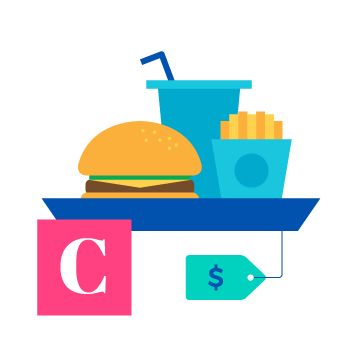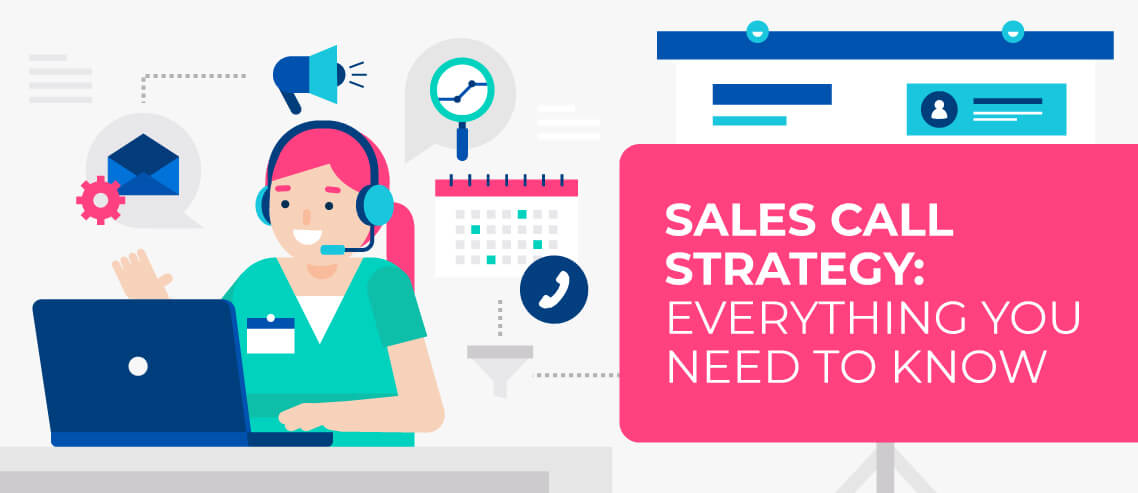Sales Terminology – The Ultimate List of Sales Terms

Contents
Sales is a jargon-heavy and acronym-heavy, industry.
Hearing your colleagues throw around terms like EBITDA, AIDA, and KPIs on your first few weeks in sales can be daunting – especially when you don’t know what they mean.
It’s one thing to trip up in front of a colleague, but you want to make sure that you’re able to engage with clients on their level from the get-go.
With this in mind, we’ve compiled the ultimate list of sales terms to help you get comfortable with these commonly used phrases and acronyms.
1. Account
In sales, an “account” is simply a way of referring to a current customer or client.
2. Annual Recurring Revenue (ARR)
Annual recurring revenue, or ARR, is a metric that measures how recurring or subscription business is performing. It provides a useful top-level overview of growth, segments out recurring revenue from total revenue, and is useful for forecasting and planning.
3. Average Contract Value (ACV)
Average contract value, or ACV, is the average revenue generated by an individual customer across a defined period of time. Other terms you may come across in relation to ACV include annual contract value (ACV), which applies when the time period being measured is one year, and average purchase value (APV), which is used for non-subscription based revenue.
4. Always Be Closing (ABC)
This is one you’re likely to hear around traditional outbound sales offices from time to time. ABC has been used to motivate reps and refers to the idea that they should constantly be looking for new prospects and successfully closing sales.
5. Customer Lifetime Value (CLV)
Customer lifetime value (CLV) is a metric that helps businesses forecast the amount of revenue that they will generate over the course of a relationship with one customer. CLV takes into account the average customer lifespan as well as customer value.
6. Customer Acquisition Cost (CAC)
Customer acquisition cost (CAC) considers marketing as well as sales. Figuring out the CAC shows you how much it costs the business on average to acquire a new customer. It’s calculated by taking the sum of advertising spend and overheads, as well as sales and marketing salaries, commissions, and bonuses, and dividing that figure by the number of new customers in that time period.
7. AIDA (Awareness, Interest, Desire, Action)
AIDA is one of the most popular sales methodologies. The acronym stands for awareness, interest, desire, and action, which are four steps in the purchase funnel. Sales reps are responsible for moving customers down this funnel to ultimately close a sale.
8. B2B
B2B is an acronym for business-to-business. It refers to a business that sells products or services to other businesses, instead of – or as well as – to consumers.
9. B2C
B2C is an acronym for business-to-consumer. It refers to a business that sells products or services to consumers, rather than – or as well as – to other businesses.
 10. BANT (Budget, Authority, Need, Timeline)
10. BANT (Budget, Authority, Need, Timeline)
BANT is a well-known acronym that stands for budget, authority, need, timeline. It’s used during lead qualification to help identify whether a lead has the appropriate budget, authority, need, and timeline to make a purchase. If sales reps deduce that the lead does meet these four criteria, they will then become qualified leads.
11. Top of the Funnel
Top of the funnel is shorthand for the first stage of the buying process. At this point, leads have generally identified a problem and are looking for ways to solve it.
12. Bottom of the Funnel
Bottom of the funnel refers to the point in the buyer’s journey at which the lead is almost ready to make a purchase.
13. Sales Cycle
The sales cycle refers to the process of selling to one customer from the first point of contact to closing the deal.
14. CRM
CRM stands for customer relationship management. CRM is software that helps sales reps manage customer and client relationships, and gives them a place to record all the vital information collected during their partnership. This includes contact information, email tracking, phone calls, appointments, and more.
15. Buying Intent
A customer’s buying intent is the likelihood that they will go ahead with a purchase. Buying intent is typically predicted by tracking behavior such as media consumption, online browsing, or content downloads.
16. Buying Criteria
Buying criteria is the written or unwritten information that a consumer requires in order to make a buying decision.
17. Churn
Churn is one of the most useful metrics in business. Your churn rate tells you how many customers you’re losing over a certain period of time. It’s calculated by looking at the number of customers lost during a defined time frame, and dividing by the total number of customers at the start of that period of time.
18. C-Level/C-Suite
C-level or C-suite is a way of describing very senior members within an organization. The “C” refers to the word “chief” at the beginning of their job titles. C-level job titles typically include chief executive officer, chief operating officer, chief financial officer, and chief technology officer.
19. Click-Through Rate
Click-through rate is a metric used to measure the success of sales and marketing campaigns. It refers to the number of clicks on a link, divided by the number of times the page is viewed.
 20. Cross-Selling
20. Cross-Selling
Cross-selling describes a scenario in which a sales rep sells one of their company’s products to a client, and then successfully sells them a different one – either at the same time or later on in the relationship.
21. Conversion Rate
In the context of sales and marketing, “conversion” refers to when an individual completes a desired action on a webpage. This could be clicking the purchase button on a website, filling out their details on contact forms, or downloading a piece of content. The conversion rate is the percentage of people who converted on that page.
22. Cold Call
Cold calling is a traditional sales technique in which sales reps make phone calls to people they have never contacted before in order to sell products or services, or in order to qualify leads.
23. Cold Email
Similar to a cold call, a cold email is an email communication sent out to a prospect who has had no prior contact with the business or salesperson in an effort to spark their interest in the product or service.
24. Decision Maker
When salespeople refer to decision makers, they’re talking about the individual – or individuals – within a business who possesses the required authority and control over the budget to make a final purchase decision. This decision maker is considered the most desirable person to sell to within a business.
25. Discovery Call
A discovery call is the first call with a prospect, with the specific goal of discovering whether it’s worth it for the sales rep to invest more time into selling to this individual. In other words, whether the prospect meets the criteria to become a qualified lead. This involves asking a lot of in-depth questions surrounding the prospect’s business, challenges, and role.
26. EBITDA
EBITDA stands for “earnings before interest taxes, depreciation, and amortization,” which is the accounting measure that large companies use.
27. Enterprise
When salespeople talk about “enterprise-level” they are generally referring to large, complex organizations with pain points around collaboration that software is able to solve.
28. Gatekeeper
A gatekeeper exists in relation to the decision maker. They are the professional who guards the decision maker, either enabling the flow of information towards them, or preventing it. Typical gatekeeper job titles include personal assistant and receptionist.
29. Gross Margin
Gross margin is calculated by subtracting the cost of goods sold from total sales.
 30. Inbound Sales
30. Inbound Sales
Inbound sales is a more modern approach than traditional outbound selling. With inbound sales, marketing and sales work together to strategically draw leads to them. When successful, customers directly approach brands – as opposed to sales reps reaching out to prospects – at which point the sales team will decide whether to qualify them.
31. KPIs
KPIs are key performance indicators. These measurable values are used to work out whether a person or business has successfully hit their goal or target.
32. Lead
One of the most commonly used words in sales, a lead is a person or company who has demonstrated that they are interested in a product or service, but not necessarily through direct contact – they may have simply interacted with your website or attended an event.
33. Lead Generation
Lead generation is the process of collecting the contact details of potential customers, or leads, and generating interest around your product or service. Content marketing, outbound marketing, referrals, and advertising are all lead generation techniques.
34. Lead Nurturing
Lead nurturing is the process of building and fortifying a relationship with prospective customers through various sales and marketing techniques. The purpose of lead nurturing is to encourage leads through the sales funnel towards conversion, and to develop a long-term relationship with them post-sale.
35. Lead Scoring
Lead scoring is used during the qualification process to assign a value to each lead, depending on whether they fulfill certain desirable criteria or not. Assigning each lead a score is useful as sales reps can then rank their leads in order of priority.
36. Low-Hanging Fruit
If you hear a colleague reference low-hanging fruit, they’re talking about a category of prospective customers that are relatively easy to turn into actual clients.
37. Metrics
Metrics are quantities that are measured in order to determine whether a defined goal has been hit. They can be used on a large scale to measure the overall success of a business, or on a much smaller front to deduce the success of a project. Examples of metrics include churn rate, click-through rate, and conversion rate.
38. Mark-Up
A mark-up is the amount of money added to the price of an item that is for sale. The mark-up is intended to cover overheads, as well as generate profit for the vendor.
39. Margin
Margin is the difference between the price of your product or service, and how much it costs for you to produce it.
 40. Monthly Recurring Revenue (MRR)
40. Monthly Recurring Revenue (MRR)
Monthly recurring revenue, also referred to as MRR, is a figure used to gain an overview of how recurring revenue or subscription business is growing – or falling – from month to month. This is best used by companies that sell shorter subscription models, given that it’s measured on a regular basis.
41. Onboarding
When you sign a new customer, you introduce them to your product or service and ensure that they will be able to use it without you. This is onboarding. Onboarding is also used to describe the process of integrating a new hire into your sales team.
42. Opportunity
An opportunity generally refers to a qualified lead who is being nurtured or sold to by a sales rep. However, some salespeople use it to refer to certain prospects pre-qualification.
43. Pipeline
Every sales rep and sales team has their own pipeline. This refers to the process that sales reps follow to turn a prospect into a customer. They’re responsible for moving their contact through the different stages of the pipeline, which vary depending on the organization and the model they subscribe to.
44. Pain point
A prospect’s pain point is essentially a challenge that they need your product or service to solve.
45. Prospect
A prospect is a person whom a sales rep believes is relatively likely to turn into a customer.
46. Prospecting
Prospecting is the practice of seeking out and discovering prospects or potential buyers.
47. Qualified Lead
A qualified lead is a lead that a sales rep has judged to hit all the criteria that makes them likely to buy, and is therefore worth spending time on during the nurture process. Lead scoring is a popular way to qualify leads.
48. Social Selling
Social selling involves the use of social media to seek out and engage with prospects.
49. Upselling
Upselling occurs when a sales rep sells an existing customer an upgraded – and more expensive – version of the product they initially bought.
50. Value Proposition
A value proposition, also referred to as a value prop, is the major benefit that an organization offers buyers. A value prop should differentiate the business from its rivals.





